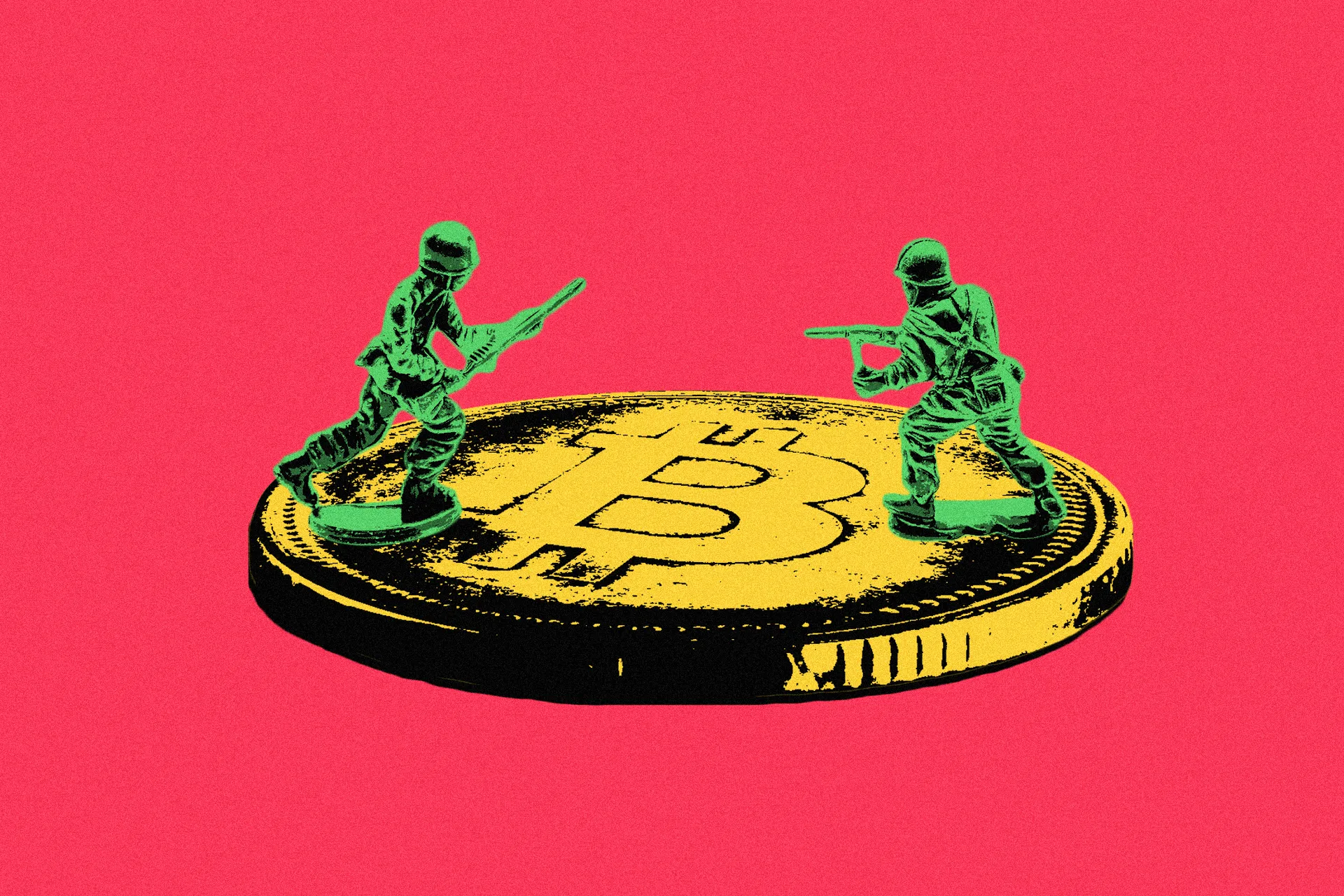Interrogating Bitcoin's Narrative: Origins, Market Dynamics, and Strategic Implications

The discourse surrounding Bitcoin often polarizes between fervent advocacy as a revolutionary decentralized currency and skeptical scrutiny as a potentially engineered financial instrument. As of August 2025, Bitcoin's market capitalization exceeds $1.5 trillion, with its price hovering around $75,000 amid institutional adoption and regulatory shifts. This analysis employs a forensic lens, drawing on historical documents, economic data, and investigative journalism to dissect Bitcoin's origins, liquidity mechanisms, and broader systemic roles.
Historical Foundations: Cypherpunk Ideals or Institutional Design?
Bitcoin's whitepaper, published in October 2008 under the pseudonym Satoshi Nakamoto, proposed a peer-to-peer electronic cash system to mitigate reliance on trusted third parties like banks. Rooted in the cypherpunk movement—which emphasized privacy through cryptography—Bitcoin built on predecessors like David Chaum's DigiCash and Wei Dai's b-money. However, persistent theories link its creation to intelligence agencies, particularly the United States National Security Agency (NSA).
A 1996 NSA technical report, "How to Make a Mint: The Cryptography of Anonymous Electronic Cash," authored by Laurie Law, Susan Sabett, and Jerry Solinas, described mechanisms strikingly similar to Bitcoin's architecture, including untraceable digital transactions using blind signatures and zero-knowledge proofs, fueling speculation that the protocol may have leaked from or been influenced by U.S. spy labs like the NSA. Bitcoin employs SHA-256; a cryptographic hash function that belongs to the SHA-2 (Secure Hash Algorithm 2) family, designed by the NSA and first published in 2001. Proponents of this view, including investor Mark Yusko, argue this alignment is too coincidental, suggesting Bitcoin as a "beta test" for controlled digital finance. It is also suggested that Satoshi Nakamoto could represent a codename for an NSA project aimed at creating a traceable digital asset to monitor global finance or fund covert operations, as explored in Yusko's YouTube discussion "Did the CIA Create Bitcoin?"
Investigative journalists Whitney Webb and Mark Goodwin have explored related themes. In their Unlimited Hangout discussions, they posit Bitcoin as potentially advancing U.S. dollar hegemony rather than subverting it, with Goodwin's "The Bitcoin-Dollar" framing it as a system where Bitcoin bolsters dollar-denominated stablecoins. Webb, questions Bitcoin's anonymity, suggesting it could normalize surveillance-friendly digital assets. However, no direct evidence ties the NSA to Nakamoto; counterarguments emphasize Bitcoin's open-source evolution from public cryptographic research, with SHA-256's security validated globally without proven backdoors.
Market Liquidity: Organic Growth or Manufactured Momentum?
Bitcoin's price volatility has long been intertwined with broader market liquidity cycles, where expansions in global money supply often fuel its rallies more than intrinsic factors. Analyst Lyn Alden has emphasized Bitcoin's role as a "global liquidity barometer," noting that its price aligns with global liquidity trends 83% of the time over any 12-month period—outpacing correlations seen in assets like gold, bonds, or equities. This perspective suggests that halvings—programmed events every four years that halve mining rewards and are often hyped as bullish catalysts—may be secondary to macroeconomic forces like quantitative easing (QE). For instance, Bitcoin's surge from 2020-2021 coincided with massive COVID-era stimulus packages, injecting trillions into economies worldwide. In 2025, post-halving gains have similarly tracked recoveries in indices like the Nasdaq, amid renewed liquidity from central banks easing rates after inflationary pressures subsided.
However, prominent critics, including economist Peter Schiff, argue that much of Bitcoin's momentum is not organic but artificially manufactured, likening it to a speculative bubble prone to manipulation and collapse. Schiff, a vocal gold advocate, has repeatedly dismissed Bitcoin as a "meme coin" with no intrinsic value, warning that its 21 million supply cap is arbitrary and fails to provide the tangible utility of commodities like gold. In 2025, he accused figures like MicroStrategy's Michael Saylor of market manipulation through aggressive corporate Bitcoin purchases, claiming these actions inflate prices temporarily before inevitable corrections. Schiff also raised alarms over potential "pump and dump" schemes tied to political announcements, such as President Trump's crypto reserve push, suggesting insiders profit at the expense of retail investors. He has predicted Bitcoin could drop significantly, urging holders to sell and rebuy later, while favoring gold mining stocks as safer alternatives.
Adding to these criticisms are allegations of artificial liquidity driven by AI-powered trading bots and stablecoins, which some analysts claim create synthetic volume on exchanges. Investigative journalists Webb and Goodwin have highlighted how stablecoins like Tether (USDT) serve as vehicles for "covert dollarization," injecting dollar-pegged liquidity that potentially inflates Bitcoin's market while funding surveillance technologies and maintaining U.S. financial hegemony. Tether's Q2 2025 attestation report revealed $127 billion in reserves backing $157.1 billion in circulation, including substantial U.S. Treasury holdings, yielding a $4.9 billion net profit for the quarter. However, controversies persist: Tether has never undergone a full independent audit, relying instead on quarterly attestations, which critics argue lack transparency. Past issues include a 2021 CFTC fine for misleading reserve claims, and over 50% of Bitcoin trades still involve USDT, raising fears of shadow banking and systemic risks.
Further scrutiny focuses on "whales"—large holders controlling significant Bitcoin supplies—who are accused of orchestrating suspicious activities to manipulate prices. In 2025, Chainalysis reported that suspected wash trading and pump-and-dump schemes on select blockchains may account for up to $2.57 billion in fabricated trading volume, often driven by whales exploiting low-liquidity conditions. Notable incidents include a whale-driven 2.5x spike in Hyperliquid's XPL pre-market token, triggering $47.67 million in liquidations and highlighting risks in decentralized exchanges. Another example involved a crypto whale profiting $6.8 million by betting on Bitcoin and Ethereum ahead of Trump's crypto reserve announcement, fueling suspicions of insider trading. Broader analyses, such as OneSafe Blog's coverage of whale manipulation tactics, underscore how these entities can create artificial volatility, disadvantaging retail investors. Even the U.S. government has emerged as a major Bitcoin whale in 2025, holding seized assets that could influence market dynamics and regulations.
Counterarguments maintain that trading bots enhance market efficiency by providing liquidity and tightening spreads, while organic institutional inflows—such as through Bitcoin ETFs—reflect genuine demand from corporations and governments. A 2025 Bank for International Settlements (BIS) report notes stablecoins' role in yield compression, similar to QE effects, where inflows can lower U.S. Treasury bill yields by 2-5 basis points, potentially stabilizing rather than destabilizing markets. However, the BIS also warns of risks, including poor performance on monetary stability tests and potential for fire sales during outflows. Schiff, in recent X posts, continues to highlight Bitcoin's underperformance relative to gold and the Nasdaq, attributing its weakness to fading hype despite corporate adoption.
BlackRock's Accumulation of Bitcoin and Market Influence
BlackRock, the world's largest asset manager, has aggressively accumulated Bitcoin primarily through its iShares Bitcoin Trust ETF (IBIT), launched in January 2024, which tracks spot BTC prices by holding physical Bitcoin in custody. BlackRock's strategy leverages ETF inflows—such as a record $970.9 million in one day and $407.8 million amid volatility—to quietly amass holdings, with critics labeling moves like offloading millions shortly after weekly buys as potential market manipulation or routine rebalancing.
This institutional dominance significantly influences Bitcoin's price movements, as BlackRock's inflows deepen liquidity, enhance price discovery, and stabilize volatility—reducing it by 15% from 2023 levels—while signaling mainstream adoption to retail and corporate investors. For instance, a $24.6 million BTC purchase in August 2025 underscored institutional confidence, correlating with price surges, while ETF approvals have normalized Bitcoin as a portfolio diversifier against global disorder and fiat erosion. BlackRock's CEO Larry Fink has publicly positioned BTC as a "scarce, global, decentralized asset" for uncorrelated returns, with analysts forecasting up to 160% ETF gains in 2025 driven by such endorsements. However, their scale amplifies impact: inflows like $1 billion in August 2025 triggered rebounds past $110,000, but structured transfers raise distortion concerns.
Despite benefits, risks from private entities like BlackRock holding vast BTC are profound, including centralization that undermines Bitcoin's decentralized ethos—potentially turning it into a Wall Street-controlled asset akin to gold. A massive dump could crash prices 30-50%, wiping out smaller holders while enabling cheap re-accumulation, exacerbating inequality and volatility. By 2030, a few firms could dominate supply, risking Bitcoin's "freedom money" ideal and enabling suppression for further control.
"As everyone celebrates the success of the spot Bitcoin ETFs, the centralization risks arising from the involvement of asset managers has fallen by the wayside..."
Tether and Shadow Mechanisms: Stabilizer or Systemic Risk?
Tether (USDT), the dominant stablecoin with a market capitalization exceeding $157 billion as of mid-2025, continues to underpin a substantial portion of cryptocurrency trading volumes, facilitating seamless Bitcoin and altcoin purchases without relying on traditional fiat banking rails. Backed primarily by U.S. Treasuries and cash equivalents, USDT acts as a bridge between fiat and crypto ecosystems, enabling rapid liquidity injections that stabilize short-term volatility in Bitcoin markets. Goodwin describes Tether as a "money printer" enabling dollar hegemony via crypto. Webb warns stablecoins exhibit programmability features akin to Central Bank Digital Currencies (CBDCs), potentially enabling government blacklisting, asset seizures, or surveillance of transactions in real-time.
Reserves have improved post-2021 scrutiny, with 90% in cash equivalents, but delistings in regions like Europe due to MiCA regulations highlight ongoing regulatory risks, with potential for forced reserve sell-offs to comply with new transparency mandates.
"Tether creates out of thin air and uses it to buy Bitcoin—this will not end well." - Peter Schiff (CEO and Chief Global Strategist of Euro Pacific Capital)
Beyond reserves, Tether's history includes a 2021 CFTC fine for misleading claims about full backing, with only 27.6% in actual reserves at times. In 2025, rapid minting of $6-8 billion USDT in July alone raised transparency flags, coinciding with Bitcoin pumps amid low organic volume—potentially indicating whale coordination or artificial support. Links to convicted money launderers and banks with dubious histories fuel skepticism, as does the absence of a full independent audit—relying instead on attestations. Schiff has called out Tether's minting as "fraud," predicting it exacerbates Bitcoin's bubble.
"Large TradFi entities like Blackrock and large crypto entities like Tether are slowly increasing their influence over Bitcoin"
Exit Liquidity and Future Trajectories: Debt Absorption or Digital Pivot?
Bitcoin’s evolving role within global financial markets raises critical questions about its structural purpose. Specifically, does Bitcoin serve as a mechanism for liquidity extraction and debt absorption, or is it transitioning into a mature macroeconomic asset—a so-called “digital pivot”? This tension encapsulates broader debates surrounding capital flows, institutional adoption, and the limits of decentralized finance within a system dominated by fiat liabilities and leveraged growth.
Bitcoin as a Debt Absorption Mechanism
In recent years, corporations have increasingly adopted Bitcoin as a treasury asset, often funded through debt instruments or equity issuance. Notably, MicroStrategy Inc. has issued billions in convertible bonds explicitly to acquire Bitcoin, transforming the company into a quasi-Bitcoin ETF. However, financial analysts and economists have raised concerns over the sustainability of this model. According to the Financial Times, such strategies bear resemblance to pre-2008 financial engineering tools—complex debt-fueled mechanisms built upon the assumption of continuously rising asset prices.
Moreover, these strategies expose firms to significant liquidity and refinancing risks. For instance, Marathon Digital Holdings and MicroStrategy collectively hold over $12.8 billion in debt maturing by 2028, much of which is collateralized by or tied to the value of Bitcoin. A sustained drawdown in BTC price could trigger margin calls or forced asset liquidations, thus transforming Bitcoin into a liability rather than a hedge.
On the sovereign front, legislators such as U.S. Senator Cynthia Lummis have proposed integrating Bitcoin into public finance strategies, including its use as a reserve asset to potentially pay down national debt. While symbolically significant, such proposals lack fiscal feasibility; with Bitcoin’s total market capitalization dwarfed by sovereign debt burdens in the tens of trillions, its application as a debt instrument remains speculative at best.
The Digital Pivot: Bitcoin as a Structural Macro Asset
An alternative trajectory envisions Bitcoin as a digital macro-asset—akin to gold in a digitized financial system—driven less by speculative cycles and more by long-term liquidity flows and institutional demand. Multiple studies have demonstrated that Bitcoin’s price movements are highly correlated with global liquidity conditions. Macro strategist Raoul Pal and investment researcher Michael Howell both attribute up to 90% of Bitcoin’s recent price action to shifts in global liquidity, particularly as central banks engage in tightening or easing.
Forbes corroborates this finding, noting a 0.94 long-term correlation between Bitcoin and global liquidity indices, which suggests that Bitcoin is not simply a speculative asset but one that is increasingly behaving like a liquidity-sensitive instrument.
Institutional behavior further supports this pivot. As of Q2 2025, more than 130 public companies now hold Bitcoin on their balance sheets, signaling sustained demand regardless of short-term volatility. Data from Bitwise indicates that institutional accumulation has exceeded newly mined BTC, generating an ongoing supply-demand imbalance that strengthens price resilience over time.
Bitcoin’s integration into sovereign wealth funds and pension portfolios underscores its institutional legitimization. For example, Norway’s Government Pension Fund and Singapore’s Temasek have both explored Bitcoin exposure as part of broader diversification and macro-hedging strategies.
However, Bitcoin’s long-term trajectory remains contested. As a potential instrument of debt absorption, it risks becoming another speculative layer in an already-leveraged financial system. In contrast, its development as a digital macro asset—correlated with global liquidity and supported by institutional demand—suggests a gradual shift toward systemic integration.
The challenge for investors, regulators, and policymakers lies in discerning whether Bitcoin’s primary utility will be to absorb systemic liquidity in times of excess—acting as exit liquidity for overleveraged entities—or whether it will pivot into a structurally sound component of modern financial infrastructure. The answer will shape not only Bitcoin’s valuation, but also its legitimacy in the global economic order.
Scalability and Sustainability Challenges
Bitcoin's Lightning Network, designed for faster micropayments, has seen capacity decline 20% in 2025 to approximately 4,200 BTC (from over 5,400 BTC in late 2023), attributed to channel closures and structural shifts toward larger, more efficient nodes. While average channel capacity grew 118% since inception, adoption remains limited, exacerbating Bitcoin's scalability issues amid rising transaction fees. Energy consumption hit 137–173 TWh annually, equivalent to Sweden's usage, with 52–62.4% from renewables—yet critics highlight the environmental footprint, including e-waste from mining hardware. Pros include unmatched security via proof-of-work; cons involve high energy demands and vulnerability to 51% attacks in low-hash periods. Whale manipulations, like those causing volatility spikes, further strain scalability.
Revolution or Restructured Control?
Forensic evidence underscores Bitcoin's roots in public cryptography advancements from the 1990s, including Adam Back's Hashcash—a proof-of-work system designed to combat email spam through computational puzzles—and Wei Dai's b-money proposal, which outlined a decentralized electronic cash system using distributed ledgers and cryptographic proofs. These innovations, along with contributions from figures like Nick Szabo's bit gold, formed the conceptual foundation for Bitcoin's whitepaper, as Satoshi Nakamoto explicitly referenced Hashcash in the protocol's design. However, theories linking Bitcoin to intelligence agencies persist and cannot be definitively disproven, adding layers of intrigue to its origins.
Counterarguments emphasize the lack of concrete evidence, with computer scientists like Cornell professor Emin Gün Sirer dismissing such claims as baseless conspiracy, noting that Bitcoin's open-source code and cypherpunk ethos align more with grassroots innovation than clandestine government engineering. Fintech's broader ties to agencies like In-Q-Tel—the CIA's venture arm investing in blockchain surveillance tools—further blur the lines, suggesting plausible indirect influences without proving direct creation. Recent X posts, such as those from analyst Martin Armstrong, reinforce these debates by claiming Bitcoin traces back to NSA/CIA experiments for tracking financial flows.
Webb and Goodwin highlight Bitcoin's inadvertent—or potentially intentional—role in dollarizing the crypto ecosystem, entrenching U.S. financial dominance through instruments like Tether and stablecoins, which could serve as bridges to programmable money under centralized oversight. Economist Nouriel Roubini, amplify these concerns by labeling Bitcoin a "rigged speculative bubble" manipulated by insiders and lacking real-world utility, warning that its volatility and environmental costs make it unsuitable as a store of value or medium of exchange. Yet, prominent Bitcoin maximalists such as Michael Saylor, Max Keiser, and Jack Dorsey overlook broader ecosystem flaws, with Saylor's MicroStrategy hoarding over 250,000 BTC potentially inflating prices through corporate leverage. Critics on platforms like Reddit argue these figures promote Bitcoin dogmatically, ignoring risks like centralization in mining pools, as evidenced by Foundry USA mining eight consecutive blocks in 2025, raising alarms over network control.
The evolving crypto landscape further positions Bitcoin as aging technology in a rapidly innovating field. With average transaction confirmation times of 10-60 minutes and fees spiking to $50+ during peak congestion—compared to newer protocols like Solana (achieving 2,000+ TPS with sub-second finality and pennies in fees) or Ethereum's layer-2 solutions (e.g. Optimism processing thousands of TPS at low costs)—Bitcoin struggles with scalability, often limited to 7 TPS due to its 1 MB block size. Efforts like the Lightning Network aim to mitigate this but have seen capacity declines, while competitors emphasize sustainability and programmability, highlighting Bitcoin's proof-of-work as energy-intensive and outdated for mass adoption.
Ultimately, Bitcoin embodies a paradoxical force: a beacon of financial sovereignty shadowed by integration into traditional systems and technological limitations.




